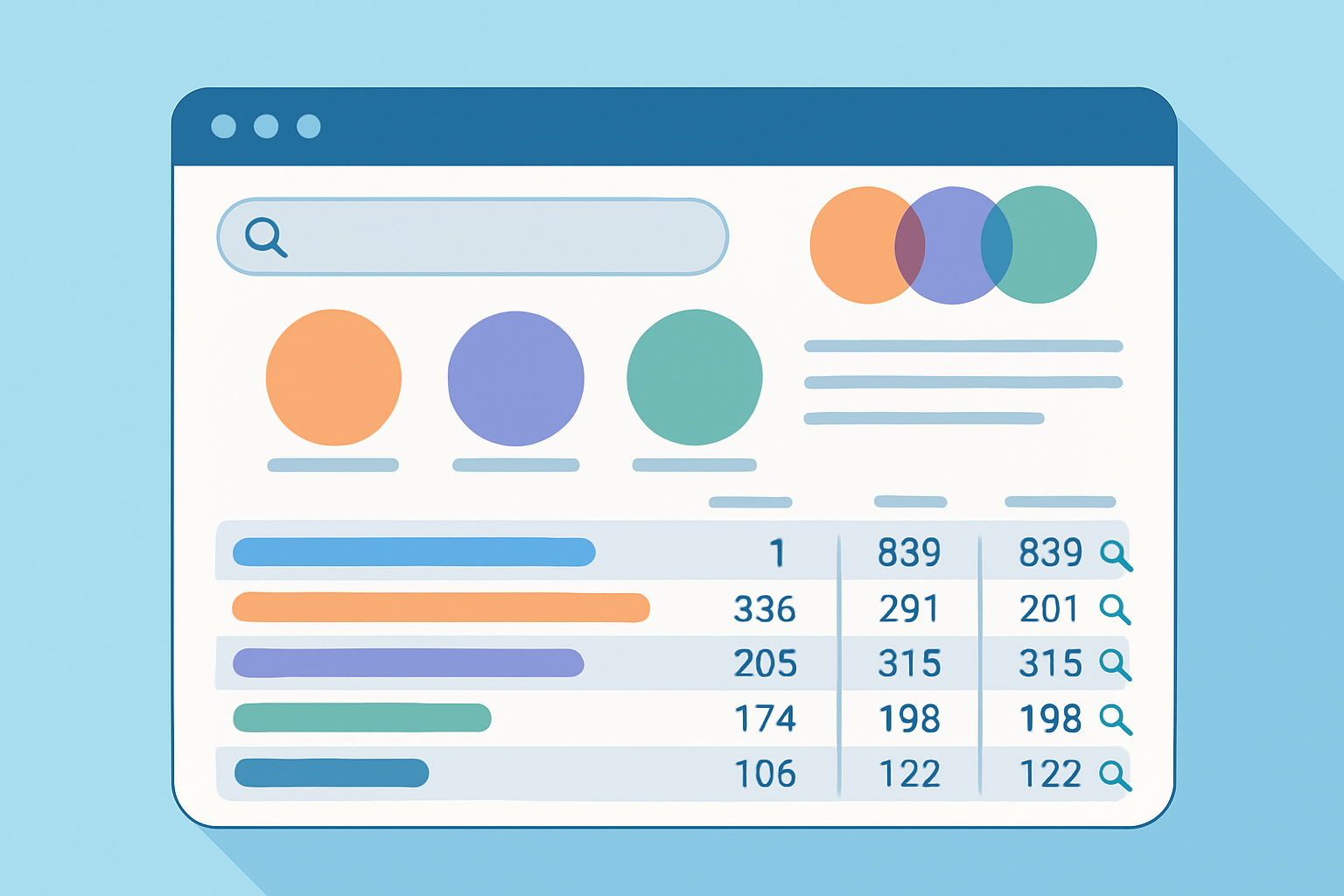Finding Content Gap Opportunities with Moz Data


In the fast-moving world of digital marketing, spotting content gaps is vital to keeping your competitive edge. A content gap occurs when your competitors tackle topics or keywords that your site has not addressed yet. Pinpointing and filling these gaps means grabbing untapped organic traffic, climbing search rankings, and staying in tune with your audience's shifting interests—all of which helps keep your growth on a steady upward path.
Moz is a well-known name in the SEO and content analytics world. It offers marketers a handy set of tools to dig into keywords, keep tabs on the competition and uncover golden content opportunities.
What Does a Content Gap Really Mean?
A content gap is like that missing piece in your website’s content strategy puzzle. It highlights topics or keywords your competitors are already covering but you haven’t quite gotten around to yet, meaning you could be letting some valuable traffic and ranking opportunities slip through your fingers.
- Topic Gaps: Skipping entire subject areas that matter to your audience can leave them scratching their heads.
- Keyword Gaps: Missing specific keywords your competitors are nailing means you might be leaving money on the table.
- Format Gaps: Forgetting to offer content in the formats your audience wants like videos or infographics can make your message fall flat.
- Audience Gaps: Overlooking certain audience segments or user intentions means you’re not hitting the right notes.
People often get their wires crossed, mixing up content gaps with just plain low-quality or outdated content. Quality and freshness do play a part, but a content gap is really about missing or underrepresented content—stuff your users are craving but just can’t seem to track down on your site. Filling those gaps means widening your lens on coverage and relevance, not just polishing up what you already have. Another bit of confusion I have noticed is the idea that content gaps only refer to new topics. In reality, they can also be about switching up formats or trying different angles to tackle specific audience needs you might have overlooked so far.
How Moz Can Help You Pinpoint Those Sneaky Content Gaps
Moz offers a handy suite of tools built to quickly sniff out elusive content gaps. Keyword Explorer lets you sink your teeth into keyword analysis while Link Explorer takes a close look at backlink profiles.
Pop your website’s domain and up to four competitors’ domains into Moz’s Keyword Gap tool—think of it as your secret weapon for spying on the competition.
Pick the target keyword set or some broad matching terms you’re curious about exploring.
Moz gets to work comparing these keyword profiles and highlighting the keywords your rivals rank for but you don’t along with the ones you both share—pretty handy stuff.
Take a close look at those unique keywords to uncover content topics you might have missed. Sometimes the gold is in the small stuff.
Lean on Moz’s trusty metrics like Keyword Difficulty and Search Volume to zero in on the most worthwhile gaps you’re itching to tackle.
Moz’s Domain Authority (DA) and Page Authority (PA) scores give you a good feel for how tough your competitors might be. Generally higher scores suggest those areas have content gaps that call for stronger and well-organized content if you want to stand out.

Moz Keyword Gap tool interface highlighting keyword overlaps and unique opportunities
Practical Ways to Spot and Bridge Content Gaps Using Moz Data
Spotting content gaps with Moz, figuring out which ones to tackle first really comes down to a few key factors. Take a good look at Moz's data on search volume and competition, then balance that with your business goals.
- Zero in on keywords that boast decent search volume and have relatively low competition—it’s a clever way to boost your chances of climbing the rankings without breaking a sweat.
- Pinpoint where your competitors are dropping the ball and swoop in with stronger, detailed content that fills those pesky gaps.
- Don’t be afraid to shake things up by mixing content formats. Sprinkle in some videos, infographics and easy-to-follow how-to guides to capture your audience’s attention.
- Make it a habit to regularly revisit and polish your existing content. Those little tweaks can do wonders for keeping your pages fresh, relevant and authoritative.
Combining Moz data with a good old-fashioned dive into user intent usually ramps up how well you close those pesky content gaps. Figuring out why individuals are punching in those keywords—whether they’re hunting for info or gearing up to make a purchase—lets you craft content that truly hits the mark. For example, you might stumble upon a keyword gap tied to a specific headache your audience is eager to solve.
Content gap analysis is like shining a spotlight on the missing puzzle pieces that keep you from truly understanding what your audience craves. Filling in those gaps can effortlessly transform a so-so strategy into one that really hits the mark.
Case Study Exploring Untapped Content Opportunities with Moz A Deep Dive
A niche outdoor gear retailer decided to try Moz's Keyword Gap tool to size up their main competitors. They soon uncovered eye-opening gaps in keywords around sustainable camping equipment—a market that’s on the rise. Zeroing in on those gaps, they crafted focused content and product pages. This led to a noticeable boost in organic traffic and sales over six months.
Picked out top contenders in the outdoor gear arena using Moz's competitive research tools.
Ran a gap analysis with the Moz Keyword Gap tool to find missing keywords related to sustainable gear.
Crafted content plans focusing on useful blogs, product comparisons and guides about eco-friendly choices.
Rolled out optimized content and kept a close watch on keyword rankings and traffic growth because numbers never lie.
Enjoyed a solid 35% jump in organic visits and a 20% boost in related product sales over six months.

Organic traffic increase over six months after filling content gaps identified with Moz
Practical Tips and Best Approaches for Ongoing Content Gap Analysis (Because Let’s Face It, It’s Never Really Done)
Content gaps have a funny way of shifting as your industry evolves and audience tastes do a little dance. To keep your strategy sharp and on point, it pays off to peek at Moz data from time to time for any new gaps sneaking onto the scene. Keep your content goals tightly in sync with these fresh insights.
- Plan quarterly content audits using Moz tools to spot new keyword opportunities before they sneak past you.
- Keep a close eye on Moz keyword rankings and competitors so you can tweak your strategy like a pro.
- Use analytics to guide you toward the content gaps that matter and focus your efforts where they'll move the needle.
- Foster collaboration between SEO, content and marketing teams to craft well-rounded strategies that tackle those gaps together.
Be careful when chasing after those highly competitive keywords flagged as gaps if you don’t have a rock-solid plan in place—jumping in blindly often ends up burning time and resources. And hey, don’t overlook the quality side of your content either—just plugging a gap with thin or cookie-cutter material usually won’t cut it against the competition.
Frequently Asked Questions
How often should I perform a content gap analysis?
To keep your strategy humming along nicely it is wise to run a formal analysis every quarter. That said, keeping a casual watchful eye on competitor moves and keyword rankings in Moz monthly can help you catch fresh opportunities and adjust your focus as the industry and your audience's interests evolve.
What is the difference between a content gap and just having low-quality content?
A content gap means you are missing something — whether topics, keywords, or types of content your audience is craving but you haven’t offered yet. Low-quality content is about how well your current content stacks up. Filling a gap means adding brand-new valuable stuff, while improving quality is about polishing what you already have until it shines.
Can I use Moz's Keyword Gap tool if I am a small website with low Domain Authority?
Absolutely yes. It can be a real game changer. The tool points out which keywords your competitors rank for that you don’t so you can zero in on those with lower Keyword Difficulty scores. That way you’re picking your battles wisely and can grow your authority without going toe-to-toe with big established players right off the bat.
After identifying a keyword gap, how do I decide what type of content to create?
Here’s the trick: mix Moz’s data with a good dose of user intent detective work. Take a peek at the top-ranking pages for your target keyword. Are they blog posts, product pages, or videos? That reveals what searchers want. Then create content that matches that intent but adds a little extra oomph — like a detailed guide instead of a quick blurb.
Is it possible to fill content gaps by updating old posts instead of writing new ones?
Yes, that’s often the smarter play. If the gap involves a topic you’ve only scratched the surface of before, digging back into an existing post to expand and optimize it can do wonders. It usually takes less time than starting fresh and can boost that page’s relevance and ranking for the keyword faster than you might expect.
Further Reading
Unlock Digital Marketing Success with Moz
Struggling to optimize your online presence? Moz is the ultimate Internet Marketing solution, empowering businesses with powerful SEO tools, insightful analytics, and expert guidance. Elevate your digital strategies and outshine the competition.
- Boost organic traffic with data-driven SEO tactics
- Enhance content marketing with expert recommendations
- Gain a competitive edge with comprehensive link analysis







